- Determine the joints that need ROM exercises.
- Consult the practitioner or physical therapist about limitations or precautions for specific exercises.
- Perform hand hygiene.5,6,7,8,9,10
- Confirm the patient’s identity using at least two patient identifiers.11
- Provide privacy.12,13,14,15
- Explain the procedure to the patient and family (if appropriate) according to their individual communication and learning needs to increase their understanding, allay their fears, and enhance cooperation.16
- Raise the patient’s bed to waist level before providing patient care to prevent caregiver back strain.17
- Put on gloves and other personal protective equipment, as needed, to comply with standard precautions.18,19,20
Exercising the Neck
- While supporting the patient’s head with your hands, extend the neck, flex the chin to the chest, and tilt the head laterally toward each shoulder.
- Rotate the patient’s head from right to left (as shown below).
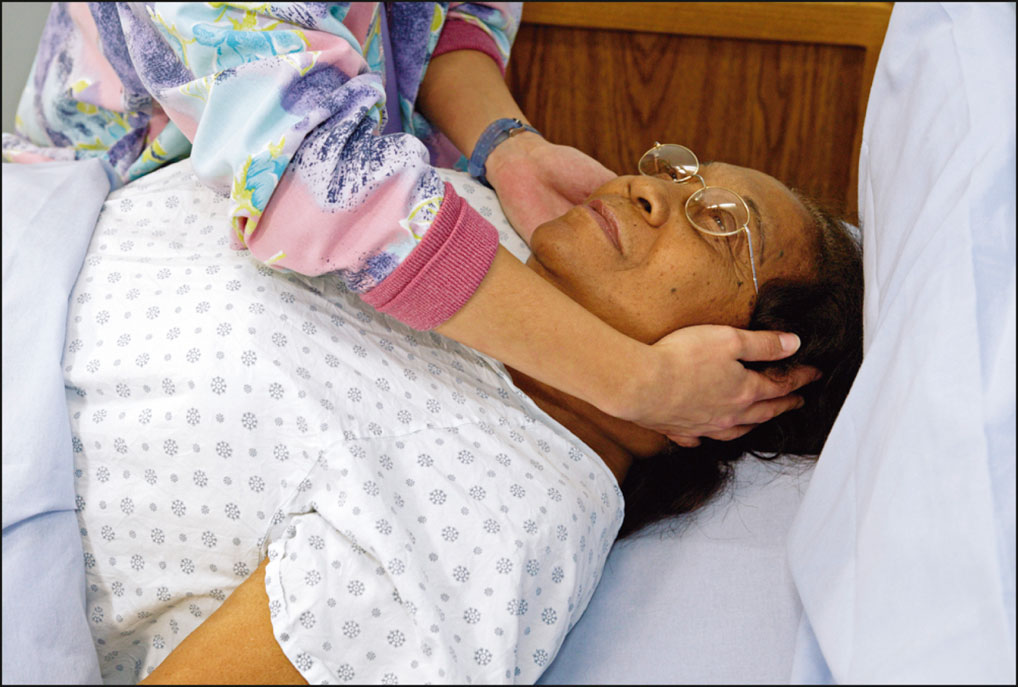
Exercising the Shoulders
- Support the patient’s arm in an extended, neutral position; then extend the forearm and flex it back.
- Abduct the patient’s arm outward from the side of the body, and then adduct it back to the side.
- Rotate the shoulder so that the patient’s arm crosses the midline, and then bend the elbow so that the hand touches the opposite shoulder and then touches the mattress for complete internal rotation.
- Return the patient’s shoulder to a neutral position and, with elbow bent, push the patient’s arm backward so that the back of the hand touches the mattress for complete external rotation (as shown below).
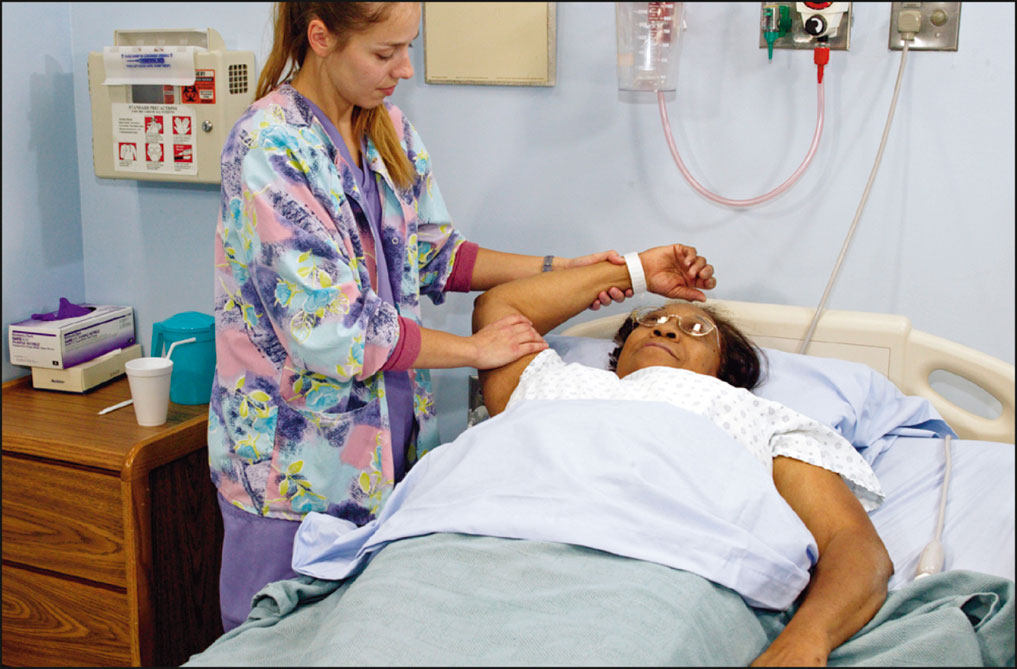
Exercising the Elbow
- Place the patient’s arm at the side with palm facing up.
- Flex and extend the patient’s arm at the elbow (as shown below).
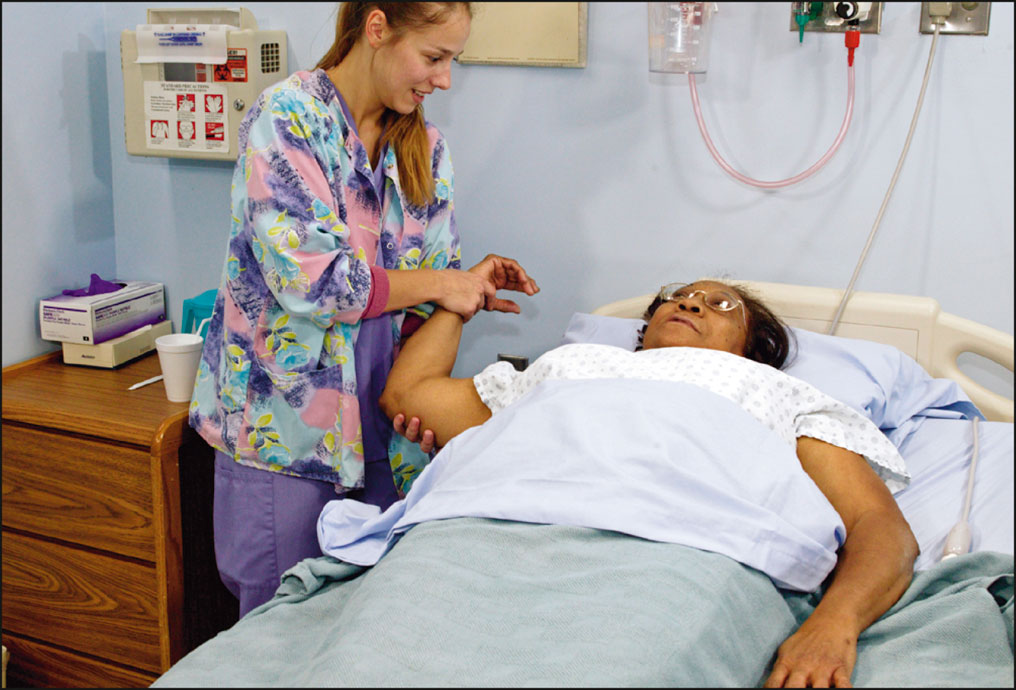
Exercising the Forearm
- Stabilize the patient’s elbow, and then twist the hand to bring the palm up (supination, as shown on top right).
- Twist it back again to bring the palm down (pronation).
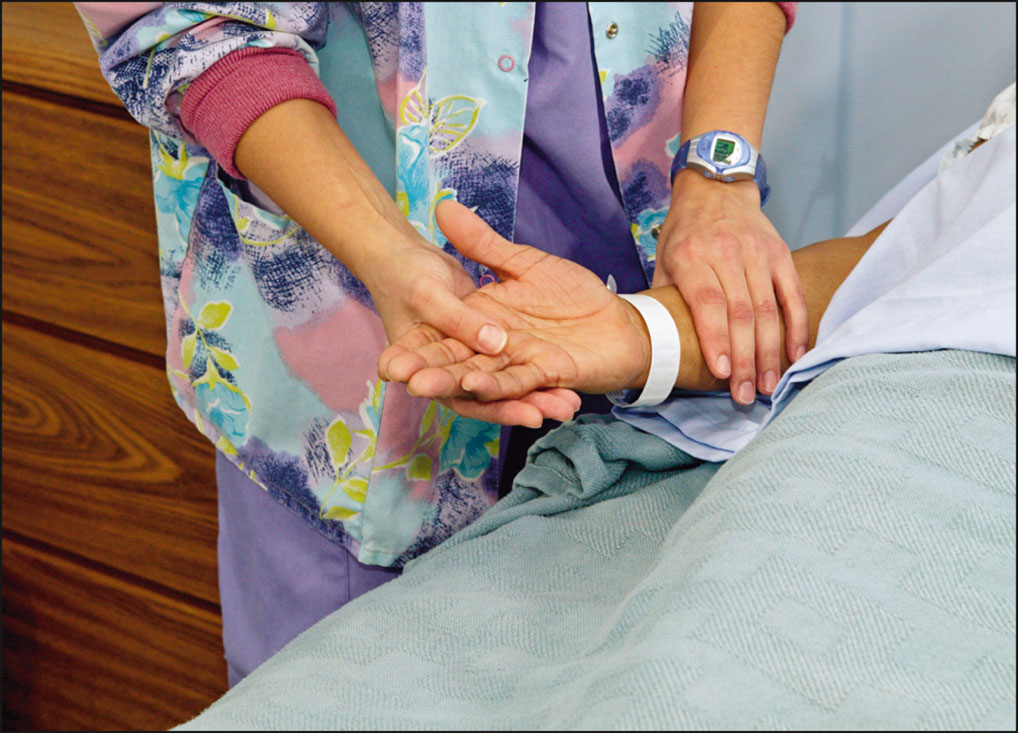
Exercising the Wrist
- Stabilize the patient’s forearm, and then flex and extend the wrist.
- Rock the patient’s hand sideways for lateral flexion.
- Rotate the patient’s hand in a circular motion (as shown below).

Exercising the Fingers and Thumb
- Extend the patient’s fingers, and then flex the hand into a fist; repeat extension and flexion of each joint of each finger and thumb separately.
- Spread two adjoining fingers apart (abduction, as shown below), and then bring them together (adduction).
- Oppose each fingertip to the patient’s thumb.
- Rotate the thumb and each finger in a circle.
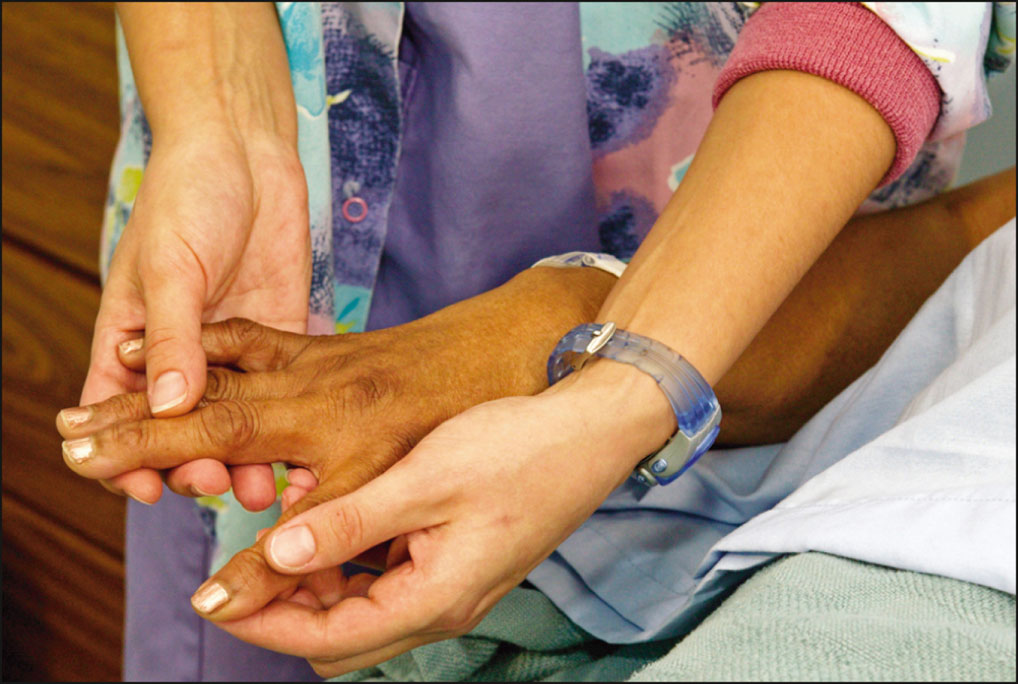
Exercising the Hip and Knee
- Fully extend the patient’s leg, and then bend the hip and knee toward the chest, allowing full joint flexion.
- Move the patient’s straight leg sideways, out and away from the other leg (abduction), and then back, over, and across it (adduction).
- Rotate the patient’s straight leg internally toward the midline (as shown below), and then externally away from the midline.
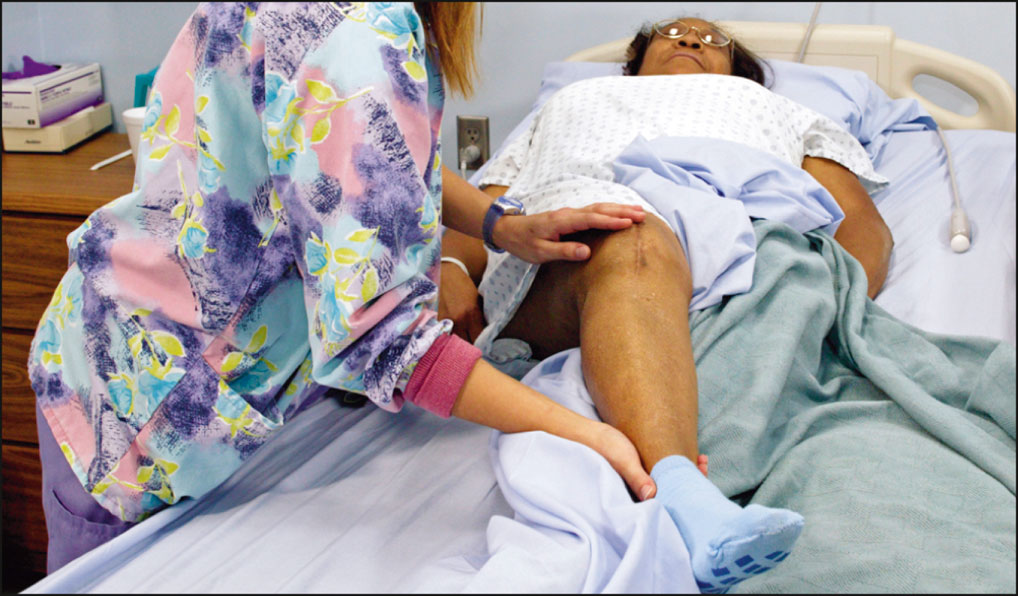
Exercising the Ankle
- Bend the patient’s foot so that the toes push upward (dorsiflexion), and then bend the foot so that the toes push downward (plantar flexion).
- Rotate the ankle in a circular motion.
- Invert the patient’s ankle so that the sole of the foot faces the midline (as shown below), and evert the ankle so that the sole faces away from the midline.
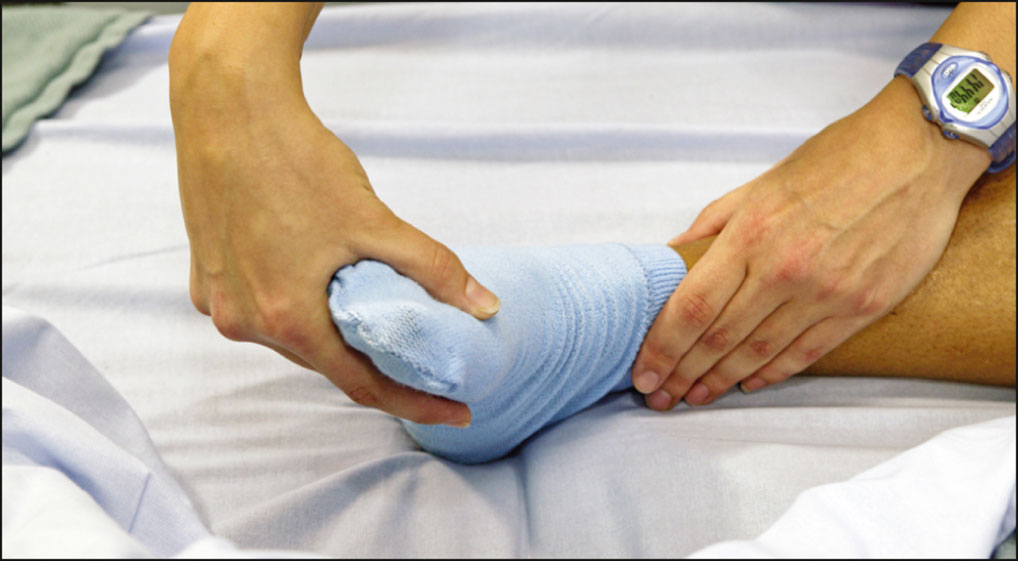
Exercising the Toes
- Flex the patient’s toes toward the sole, and then extend them back toward the top of the foot.
- Spread two adjoining toes apart (abduction, as shown below), and bring them together (adduction).
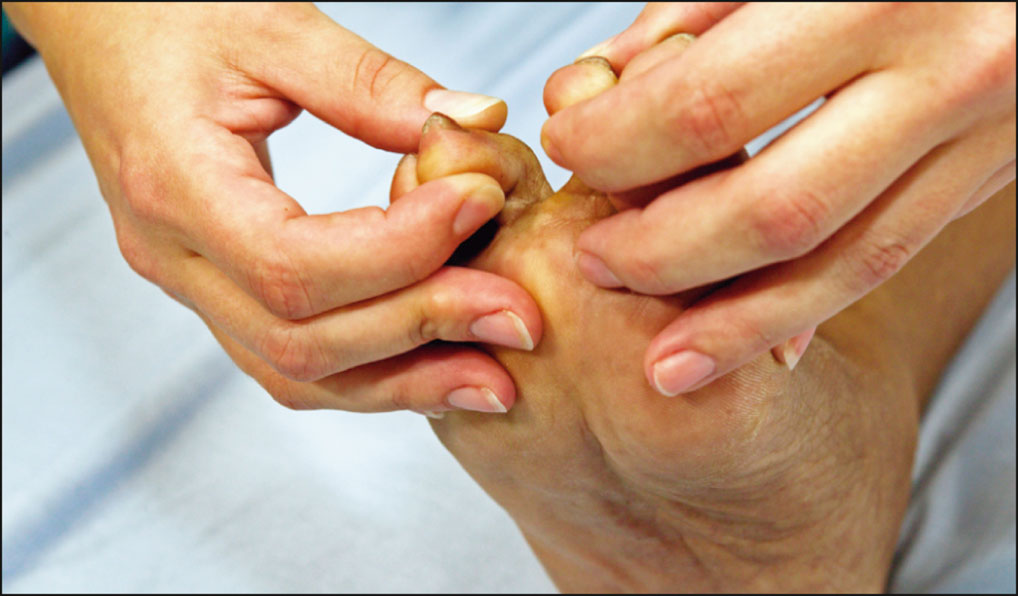
Completing the Procedure